Sustainable fishing in Australia
Since the MSC was founded in 1997, fisheries, governments, environmental NGOs, and consumers have been part of a collective effort to end overfishing and ensure our ocean is fished sustainably.
Stakeholder participation in MSC fishery assessments contributes to stronger fishery performance at a time when fishing impacts on the ocean are compounded by pollution and climate change.
The Fishing for the Future Report outlines the sustainable fishing strides of Australian fisheries that voluntarily choose to be assessed against the MSC Fisheries Standards by a third-party, Conformity Assessment Body (CAB).
As of November 2024:
- 19.3% of all marine wild catch worldwide has been certified to the MSC Fisheries Standard
- Over 35% of marine wild catch landings in Australia are MSC certified
- Over 116 sustainable fisheries improvements nationwide.
These improvements contribute towards achieving the MSC vision of a healthy ocean with seafood supplies safeguarded for the future. The approach means everyone has a role in protecting the future of our ocean and fish stocks while enjoying seafood as part of the MSC’s Theory of Change.
Progress in sustainable fishing
30 fisheries
engaged in the MSC program
38 species
diversity of species certified
0
MSC fisheries in the MSC Improvement Program
The UN Sustainable Development Goals (SDGs)
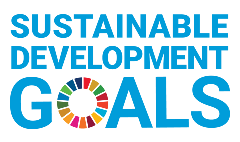 MSC certification is used by countries and organisations as part of their commitments towards delivering SDG14 on Life Below Water. Organisations and stakeholders involved in the MSC program for sustainable fishing are helping deliver at least 34 targets across 5 SDGs of key United Nations targets to end poverty and address urgent challenges for environmental, social and economic development, as suggested in the 2023 MSC SDG Analysis. Aside from the SDGs, the MSC program is also used as an indicator in the UN’s framework to safeguard marine biodiversity. This aims to protect and conserve, by 2030, at least 30% of the planet, including a reduction to near-zero of the loss of areas of high biodiversity importance.
MSC certification is used by countries and organisations as part of their commitments towards delivering SDG14 on Life Below Water. Organisations and stakeholders involved in the MSC program for sustainable fishing are helping deliver at least 34 targets across 5 SDGs of key United Nations targets to end poverty and address urgent challenges for environmental, social and economic development, as suggested in the 2023 MSC SDG Analysis. Aside from the SDGs, the MSC program is also used as an indicator in the UN’s framework to safeguard marine biodiversity. This aims to protect and conserve, by 2030, at least 30% of the planet, including a reduction to near-zero of the loss of areas of high biodiversity importance. Track a fishery
The MSC provides a searchable database of all the fisheries involved in the MSC program. All certificates and assessment documents can be downloaded from Track a fishery. A list with links to all Australian Fisheries and species certified is at the end of this report and in the below window showing the map of Australian Fisheries.
Analysis of improvements and comparison of stakeholder engagement for Australian fisheries assessed under MSC standards
The following is based on data collected between March 2000 and March 2022
Improvements through the MSC program
20 Fisheries
engaged in the MSC program in Australia
31 species
Diversity of species certified in Australia
116
improvements by MSC certified fisheries in Australia
MSC certified fisheries are audited annually following their initial assessment. At the end of the five-year certificate, if the fishery wishes to remain in the program for another five-year cycle, it must undergo the reassessment process. All assessments and reports are available for public viewing and comment at fisheries.msc.org
Standards are based on three principles and must reach a minimum score of 80 (with the highest 100).
- Stock health
- Ecosystem impact
- Sustainable Management
The below graph showcases the average improvements in scores made across the three principles for six Australian fisheries that completed two full assessment cycles in 2022. The comparison of scores between the two assessment cycles shows positive improvements in all principles.
Comparison of assessment scores for each of the three standard principles. Initial assessment vs. first re-assessment
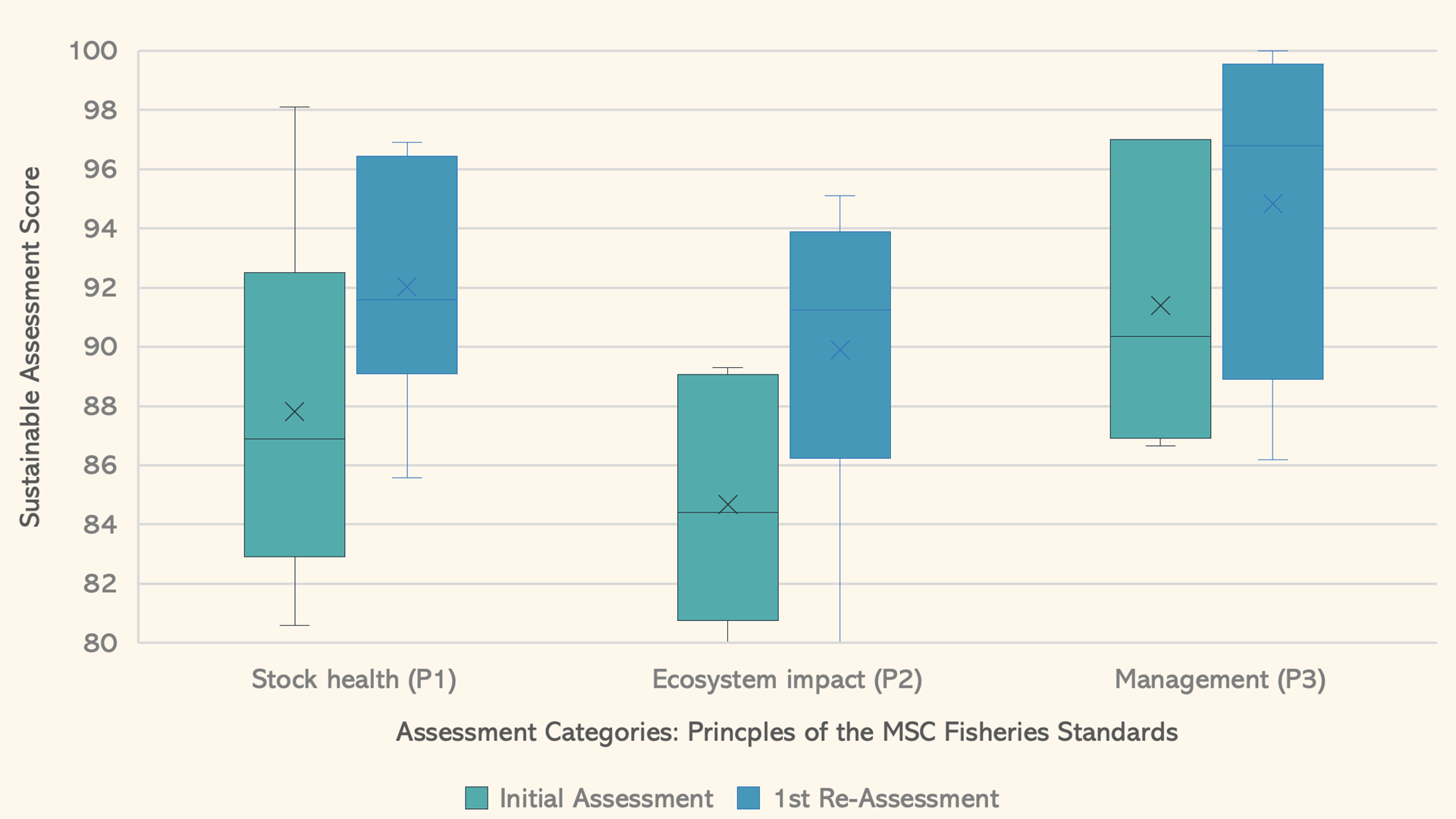
Continuous improvements by MSC certified fisheries in Australia
Fisheries must pass a high level of sustainable working practices while meeting the MSC’s minimum requirements for each of the three principles to receive certification. Independent CABs may still find areas for improvement and, in such instances, will issue a “conditional” certification. These conditions signify improvements the fishery must make to maintain certification. Conditions are essential where a Performance Indicator scores between 60-79, and the fishery must then meet a performance level above 80 by the end of the 5-year certification cycle, based on yearly milestones.Australian fisheries have closed many conditions throughout their involvement in the MSC program. Up to 2022, 103 unique certification conditions were set on Australian MSC fisheries, driving fishery improvements across all elements of the MSC Fisheries Standard. Of the conditions, 77 were assessed independently and confirmed completed by a CAB. The remaining 26 open conditions were in the process of improving scoring outcomes.
Stakeholders are welcome to input into fishery condition performance through MSC’s annual surveillance audit process.
Status of conditional warrants issued for each of the three Principles (March 2022)
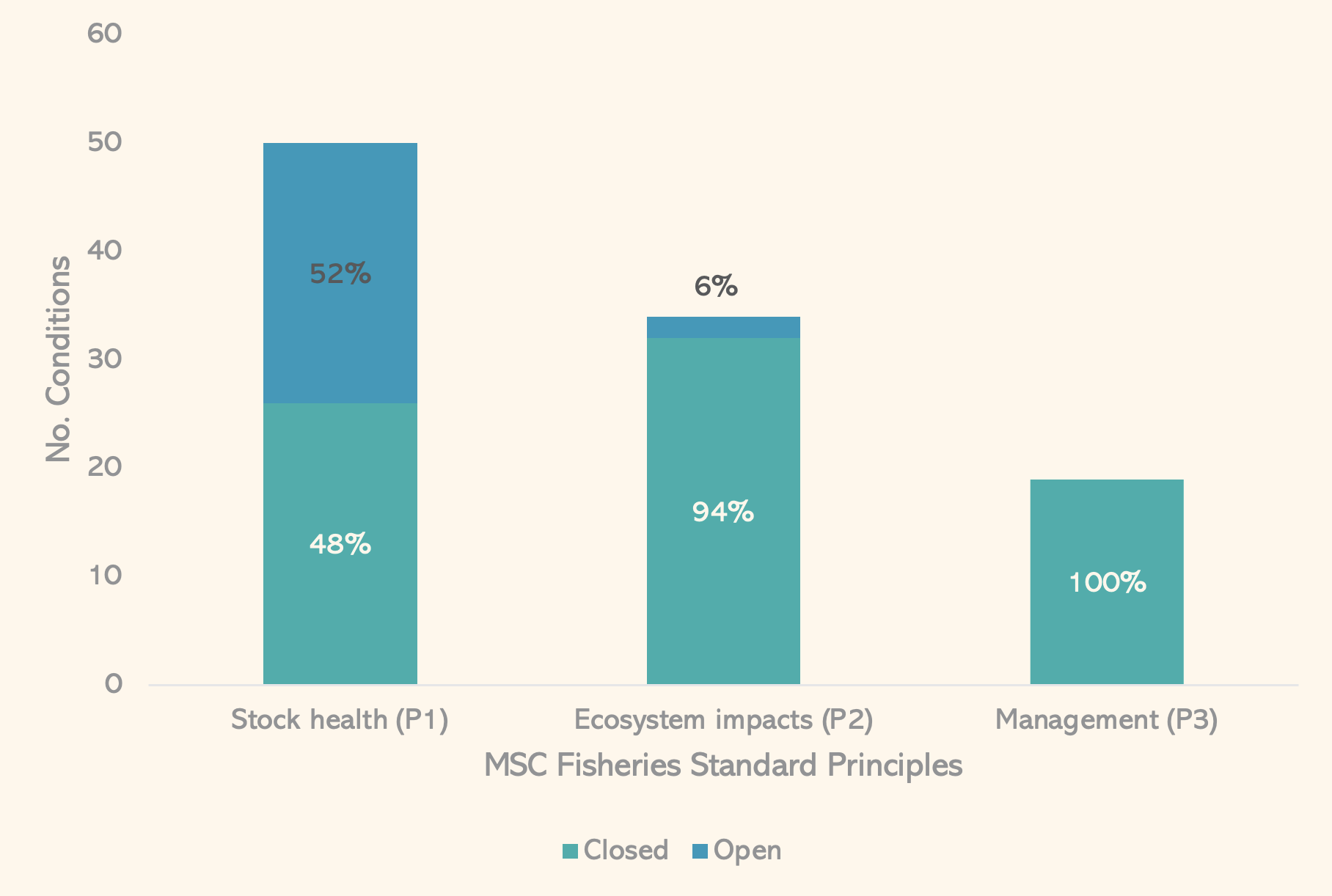
Category of action required to close conditions
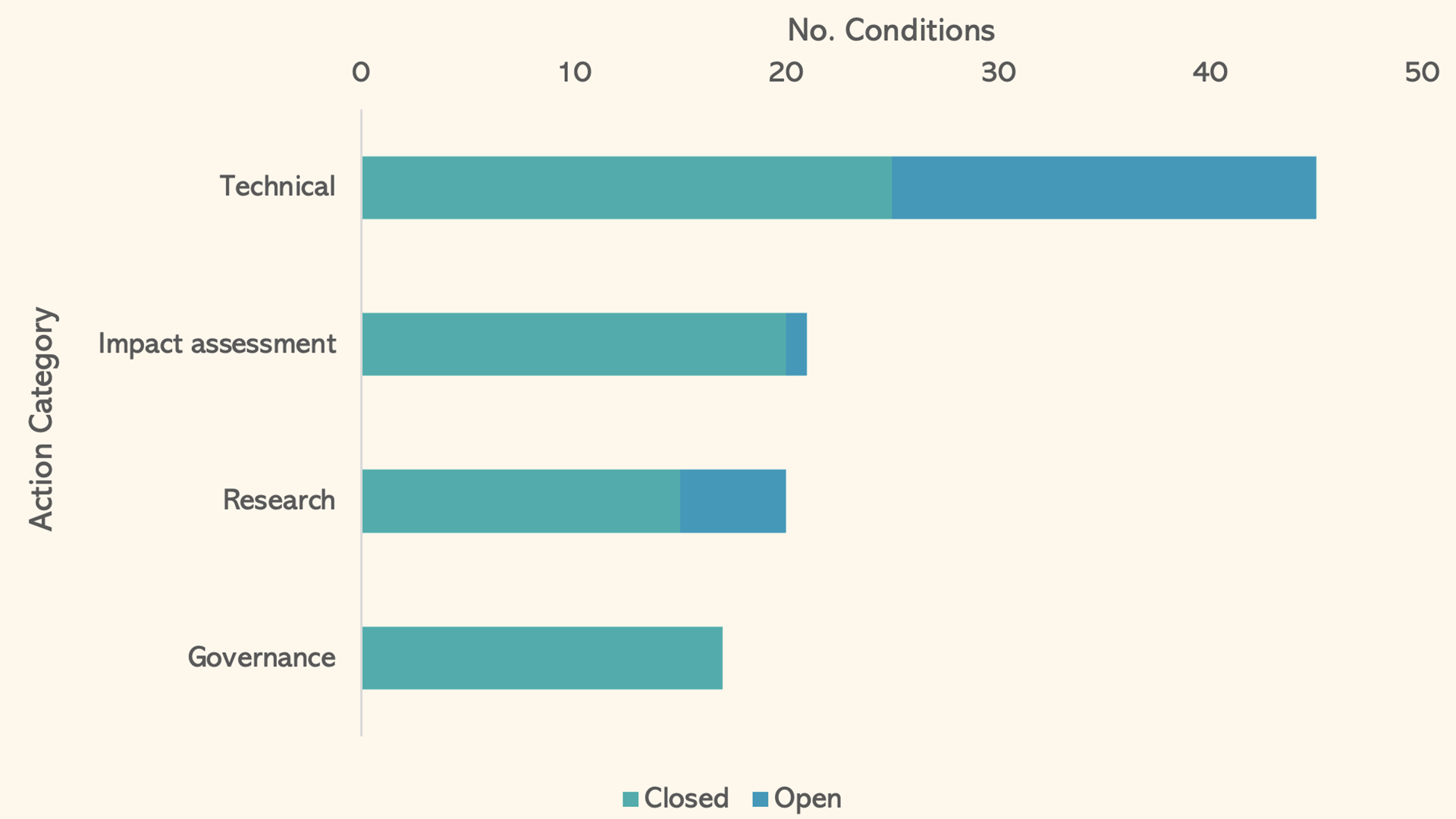
Conditions under Principle two: Ecosystem Impact, further categorise into: 1. Direct impact on habitat and ecosystem, 2. Bycatch and untargeted species, 3. Endangered, Threatened, and Protected species
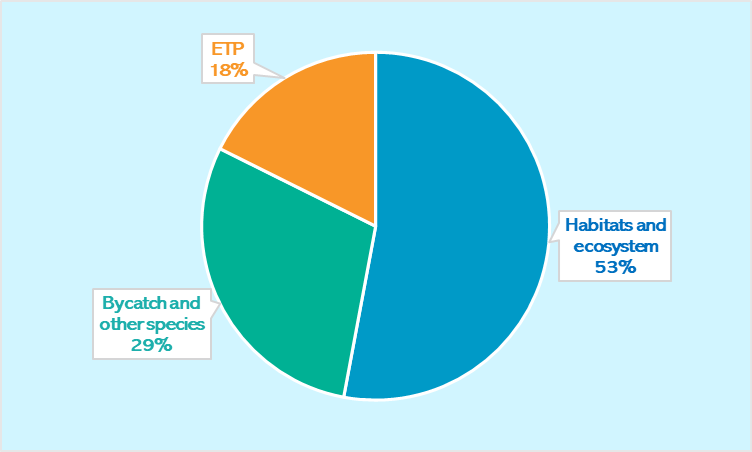
Examples of improvements made by fisheries
Amongst the improvements made by fisheries used for the 2022 data, the following improvement cases provide some examples of outstanding advancements in sustainability standards and practices.
Modified pot design
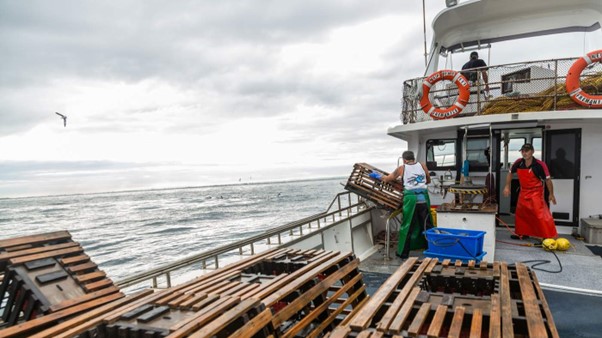 The Australia Western Rock Lobster Fishery had conditions related to information and impacts on Endangered, Threatened and Protected (ETP) species, so it implemented a simple, industry-led response to prevent sea lions from getting stuck in lobster pots: a blunt metal rod attached to the bottom of the pot that prevents sea lions from getting stuck in the narrow neck of the pot. As part of the condition, the fishery established a monitoring program to study whether this could reduce the number of interactions with sea lions, and it found that the devices known as SLEDs (Sea Lion Exclusion Devices) were extremely effective. Since their implementation in 2009, the fishery has not had a single sea lion mortality. Not only did this reduce sea lion interactions entering the pots, but it also provided the rest of the world with evidence that this type of gear modification is effective against sea lion interactions. Now, it is required for all lobster pots set in waters less than 20m deep in designated zones in the Mid-West region and Abrolhos Islands1, helping to protect this endangered species from fishery interactions.
The Australia Western Rock Lobster Fishery had conditions related to information and impacts on Endangered, Threatened and Protected (ETP) species, so it implemented a simple, industry-led response to prevent sea lions from getting stuck in lobster pots: a blunt metal rod attached to the bottom of the pot that prevents sea lions from getting stuck in the narrow neck of the pot. As part of the condition, the fishery established a monitoring program to study whether this could reduce the number of interactions with sea lions, and it found that the devices known as SLEDs (Sea Lion Exclusion Devices) were extremely effective. Since their implementation in 2009, the fishery has not had a single sea lion mortality. Not only did this reduce sea lion interactions entering the pots, but it also provided the rest of the world with evidence that this type of gear modification is effective against sea lion interactions. Now, it is required for all lobster pots set in waters less than 20m deep in designated zones in the Mid-West region and Abrolhos Islands1, helping to protect this endangered species from fishery interactions.
Learn More: The Western Australia rock lobster fishery story | MSC
Modified longlines
The Australia Eastern Tuna and Billfish Fishery was certified in 2015 with a condition related to ETP species outcome. Fishery stakeholders had to demonstrate the fishery could reduce interactions with turtles as well as with mako sharks to a level where their recovery was not hindered by the assessed fishing operations. To do so, the fishery implemented an electronic monitoring system. The fishery had also introduced circle hooks, line cutters, and de-hookers to lower the level of interaction and impact on these endangered species. After the monitoring system proved that the interactions with these species were low enough to the point where the fishery was not detrimental to their populations, the condition was closed.
Learn more: Tuna Australia earns the MSC blue fish tick for the Australian Eastern Tuna & Billfish Fishery | Marine Stewardship Council
Crew-member Observer Plan
Both the Exmouth Gulf and Shark Bay prawn fisheries implemented crew-member observer programs to address the ETP species information conditions. Whilst the impact of these fisheries on sea snake and sawfish populations was considered highly likely to be within environmental tolerances, the stakeholders were tasked with a condition to improve the way they monitored and gathered information on such ETP interactions. The crew members were trained to safely handle snakes, and the observer program was a huge success: through the Crew Member Observer Program it was estimated that 10% of the sea snake interactions were identified at the species level, providing a strong reference position to understand sea snake interactions across the two fisheries. In the case of the Shark Bay prawn fishery, 88% of sea snakes were being released alive.
Learn more: Fishery innovations that drive ocean biodiversity research | Marine Stewardship Council (msc.org)
The value of stakeholder feedback
An integral and valuable component of the certification process is the transparency and opportunity for stakeholders to participate in discussion at critical stages of a fishery’s assessment. Stakeholder input strengthens credibility, transparency, and fair outcome.
- External stakeholders may challenge the scoring of a fishery or any other structural part of the report.
- If a credible case is brought forward, the Conformity Assessment Body (CAB) is obligated to consider, address, and respond. This may lead to amendments and/or change the fishery’s scoring.
- If a stakeholder remains unsatisfied that their input has not been reflected in the finding of the fishery performance against MSC requirements, the objection can be taken to an independent adjudication process.
This is a further, independent legal review of the performance of both the CAB’s application of the MSC requirements on the fishery and the performance of the fishery itself.
Participation across stakeholder groups in Australian Fisheries assessments up to March 2022
The following pie chart displays the level of stakeholder engagement based on submissions towards fisheries and assessment outcomes. Note the MSC(TO) refers to technical oversights including report errors (data, misspellings, grammar).
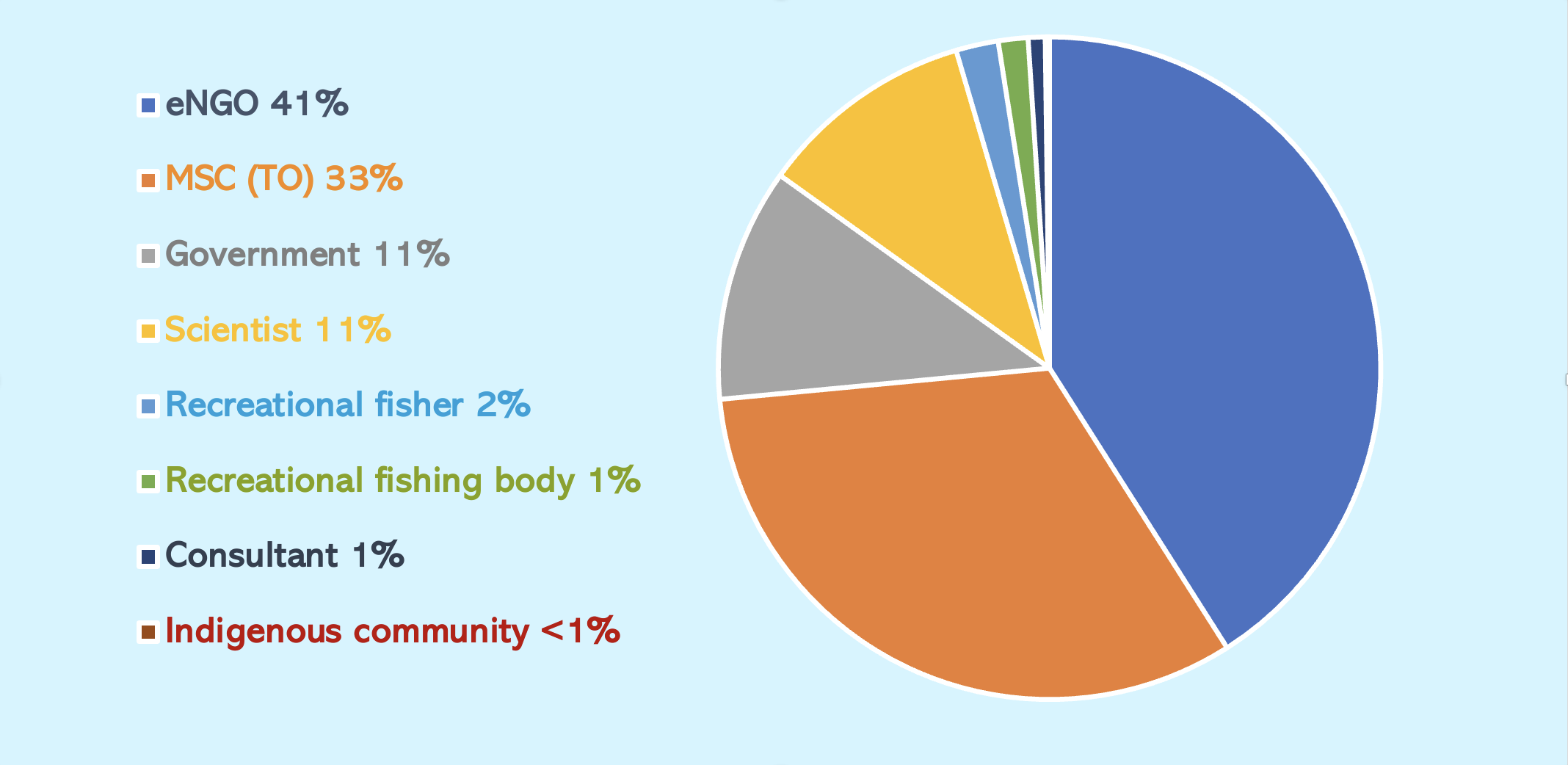
Areas of stakeholder focus for top three stakeholder groups: eNGOs, Governments, and Scientists
The following charts show the feedback received from three main stakeholder groups on assessments of fisheries in Australia up until March 2022. The feedback is grouped in relation to the three principles of the MSC Fisheries Standard.
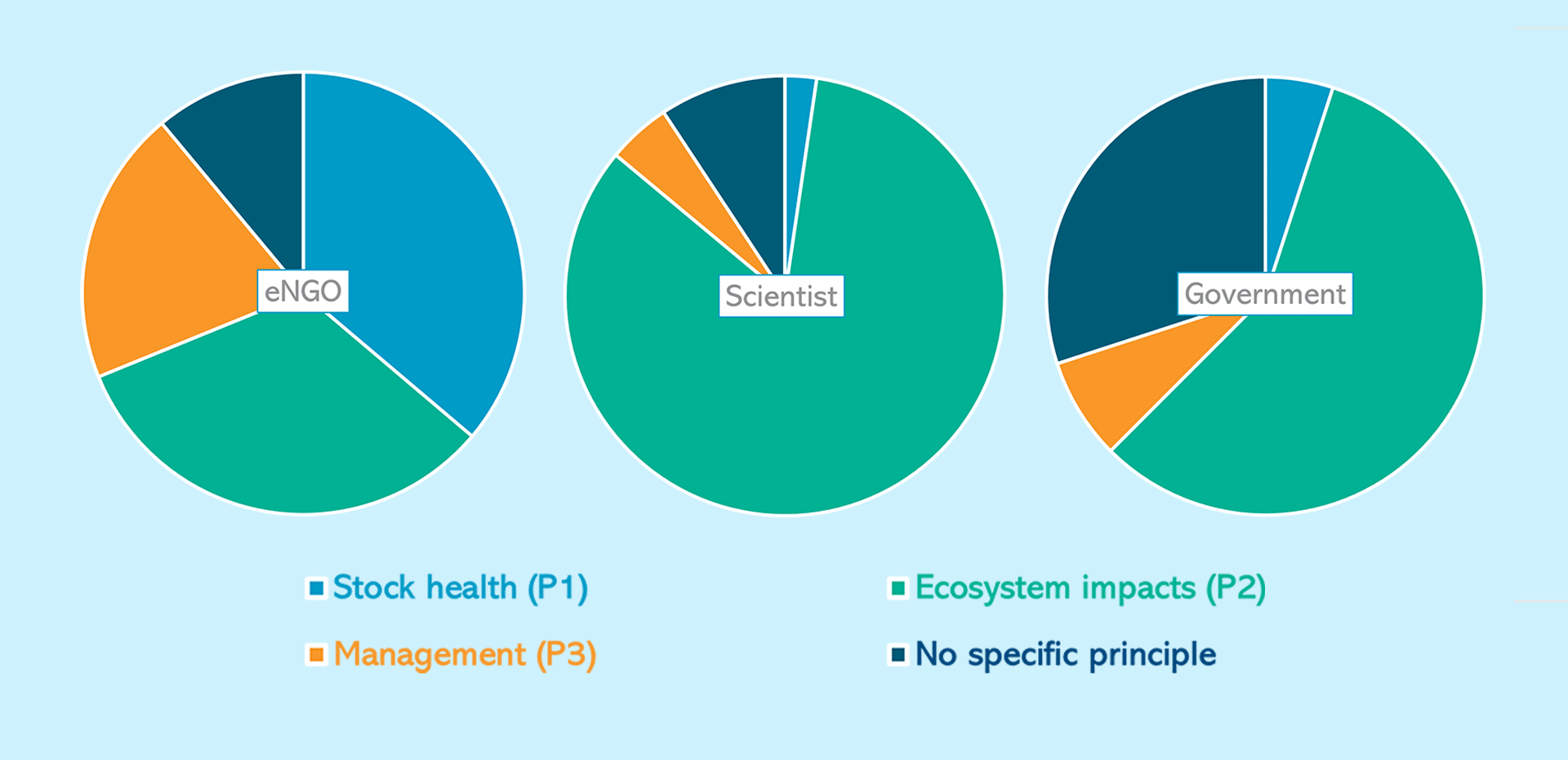
Principle 2: Ecosystem Impact – level of engagement input per topic for each stakeholder group: eNGOs, Governments, and Scientists
Disregarding the MSC engagement due to technical oversights, the following chart further details the topic of discussion under 'principle 2, Ecosystem impact' area of focus.
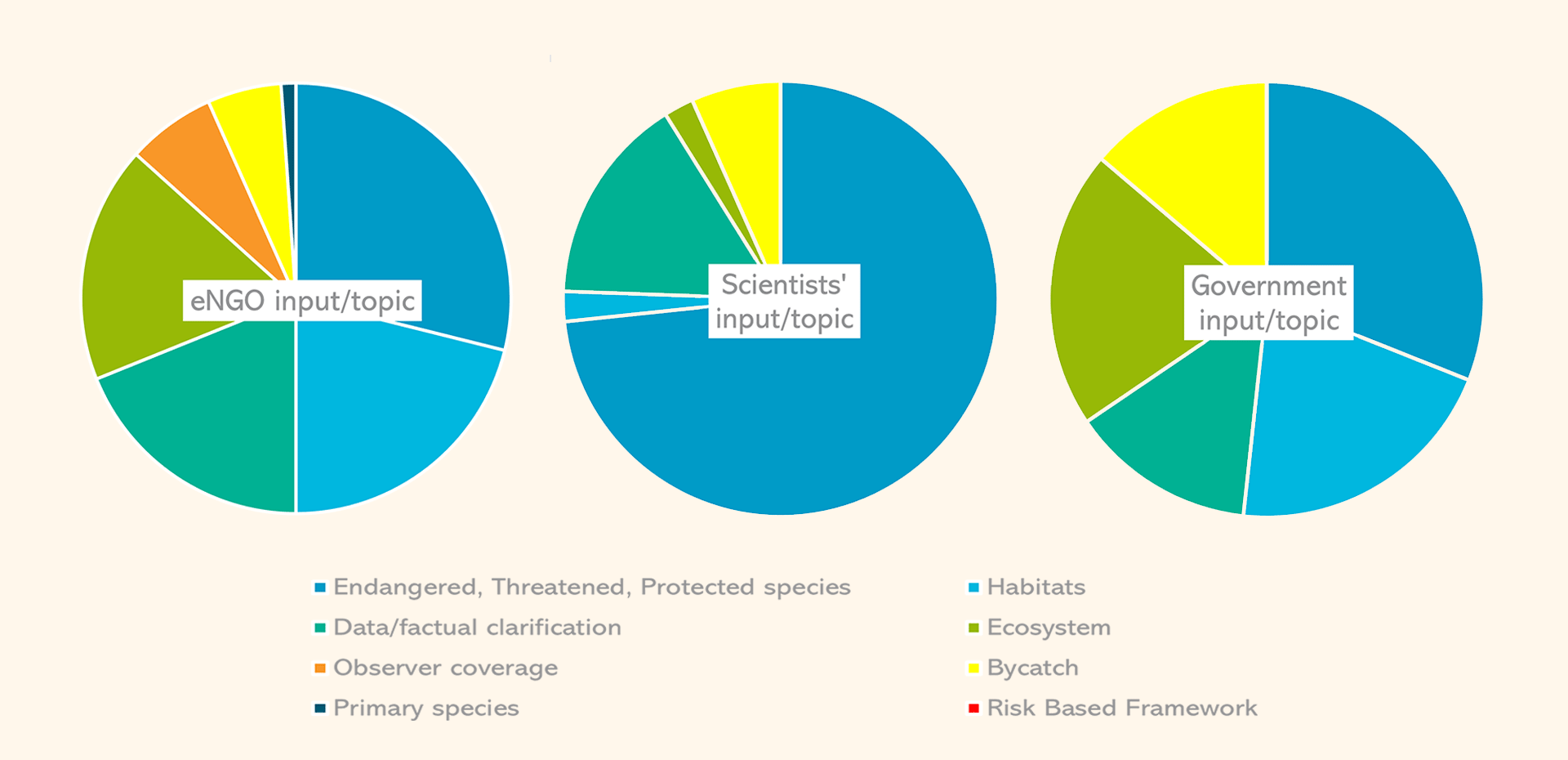
Conclusion
Australia's fisheries have made significant strides in meeting MSC requirements, starting with the certification of the Australia Western Rock Lobster fishery as the world's first MSC-certified fishery in 2000. In 2021, MSC-certified landings witnessed a remarkable surge from 11,353 metric tons, constituting 5.8% of the national landings at the time, to approximately 85,806 metric tons—an extraordinary increase of nearly 700%. As of November 2024, over 35% of Australian wild-caught fisheries landings are MSC certified.
List of MSC engaged Australian Fisheries 2024
Demersal
- Australia Blue Grenadier
- Australia Heard Island and McDonald Islands toothfish & icefish
- Australia Northern prawn
- Australia Winter Spawning Blue Grenadier
- Exmouth Gulf Prawns
- Macquarie Island (MI) Toothfish
- Shark Bay Prawn
- Spencer Gulf King Prawn
- Western Australia Sea Cucumber
- New South Wales Eastern Rock Lobster
- Australian Royal Red Prawn
- Australia East Coast King Prawn
- Peel Harvey sea mullet
- Australian orange roughy (full assessment)
Pelagics
- Australia Eastern Tuna and Billfish Fishery (albacore tuna, yellowfin tuna, bigeye tuna and swordfish)
- South East Australia Small Pelagic Fishery (Commonwealth) Mid-water Trawl
- Great Australian Bight trawl fishery
- Southern Bluefin Tuna purse seine (full assessment)
- Southern Bluefin Tuna longline (full assessment)
Shellfish (excl. shrimp / prawn)
- Abrolhos Island and Mid-West Scallop Trawl Fishery
- Australia Silver-lipped Pearl Oyster
- Australia West Coast Deep Sea Crab
- Australia Western Rock Lobster
- South Australia Lakes and Coorong Pipi
- Western Australia Enhanced Greenlip Abalone
- Western Australia Abalone
- Western Australia Octopus
- Western Australia Peel Harvey Estuary: recreational and commercial blue swimmer crab and commercial sea mullet
- Western Australia Sea Cucumber
- Bass Strait Central Zone scallop
| Description: | The Fishing for the Future Report for Australia is the first of its kind and provides a detailed analysis of the positive environmental impacts made by fisheries that have chosen to be assessed against the MSC Fisheries Standard since 2000. |
|---|---|
| Date of issue: | 21 May 2024 |


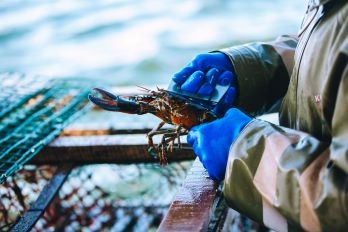
.tmb-thumb300.jpg?Status=Master&Culture=es&sfvrsn=eaefe08b_1)